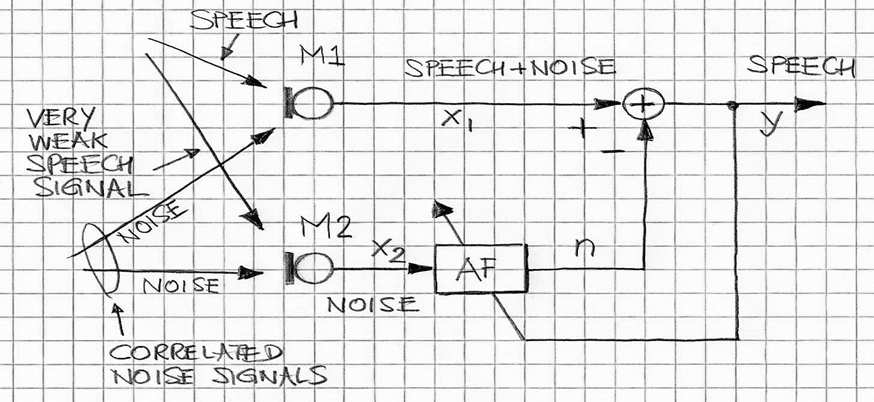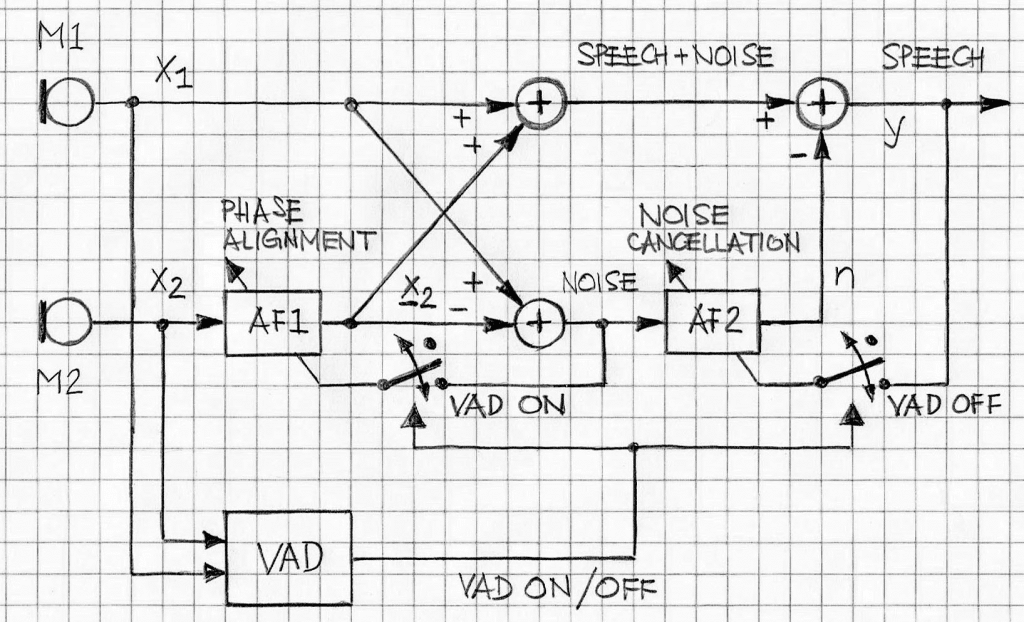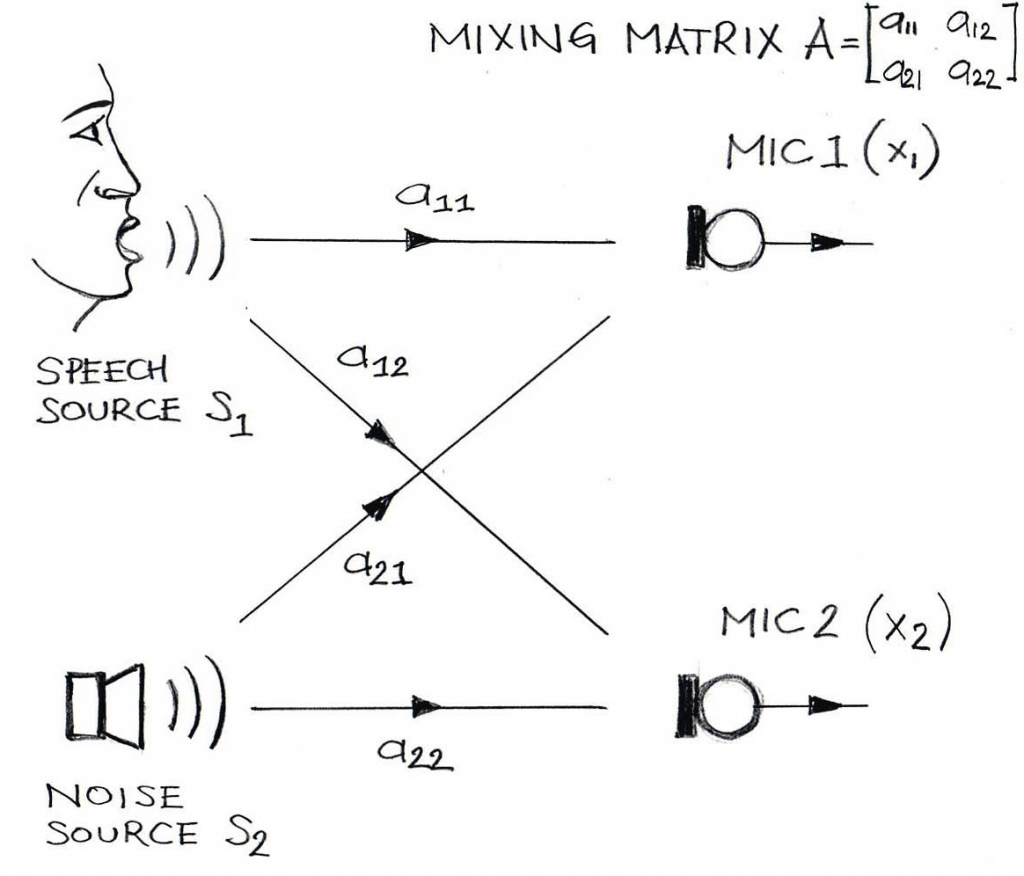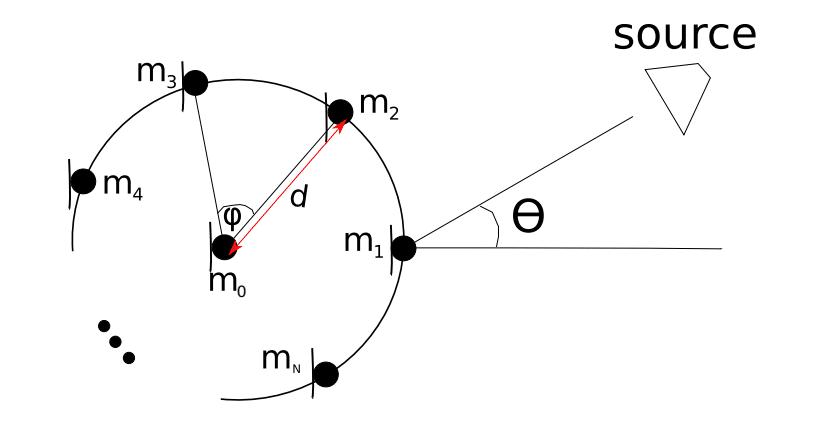Multi Mic Audio Signal Processing
Multi mic audio signal processing is a digital signal processing solution for enhancing an audio signal of interest over competing audio sources. Multiple microphone systems provide additional spatial and reference noise information not available to single microphone systems.
Traditional audio signal processing algorithms, such as acoustic echo cancellation, automatic gain control, dynamic range compression and equalization filters can still be applied. Now with multi-mic processing, multiple omnidirectional microphones serves as front-end to focus on sound from a given direction.
VOCAL offers a many multi-microphone (and microphone array) audio software solutions using the latest signal processing techniques, including:
Dual Mic Noise Reduction
Dual Mic Noise Reduction software is adaptive algorithm which uses two microphone signals to improve the quality of an audio signal. A noise reference microphone captures and filters out the correlated noise present in a noisy speech microphone signal. Combining this software with the single microphone noise reduction software provides an efficient solution for directional and ambient noise reduction.

Acoustic Beamforming
Acoustic Beamforming is spatial filtering with the ability to focus on sound in one direction, while attenuating undesired sound sources. VOCAL’s Acoustic Beamforming SDK expands dual mic solutions by microphone arrays. Linear, circular or nested microphone arrays are used to enhance the speech of interest while suppressing interference, background noise, and reverberation. There are a wide variety of the acoustic beamforming algorithms, from fixed to adaptive beamforming, VOCAL’s expertise in advanced signal processing will help provide find the best solution for the application.

Blind Signal Separation
Much like Acoustic Beamforming, Blind Signal Separation (BSS) is able to separate multiple sound sources utilizing microphone arrays. BSS is the separation of a set of signals from a set of mixed signals without the aid of information (or with very little information) about the signal source or the mixing process. This is a noise reduction process which isolates the signal of interest from the interfering noise sources.

Sound Source Localization
Sound Source Localization (SSL) is an algorithm that finds the direction of sound source(s) in an acoustic environment. When utilizing an array of microphone signals, Sound Source Localization (SSL) software can serve as the beam steerer for acoustic beamforming algorithms. This information can also be used to provide visual cues for augmented reality and voice control systems.

VOCAL has extensive industry experience in the development, integration, and customization of software utilizing microphone arrays. The applications that can benefit from this software include far-field conference speakerphones, voice controlled smart devices and audio surveillance equipment. Contact Us to discuss your audio processing application requirements.
VOCAL’s solution is available for the above platforms. Please contact us for specific supported platforms.

